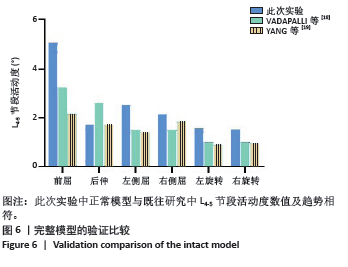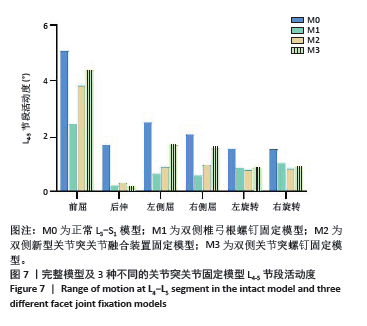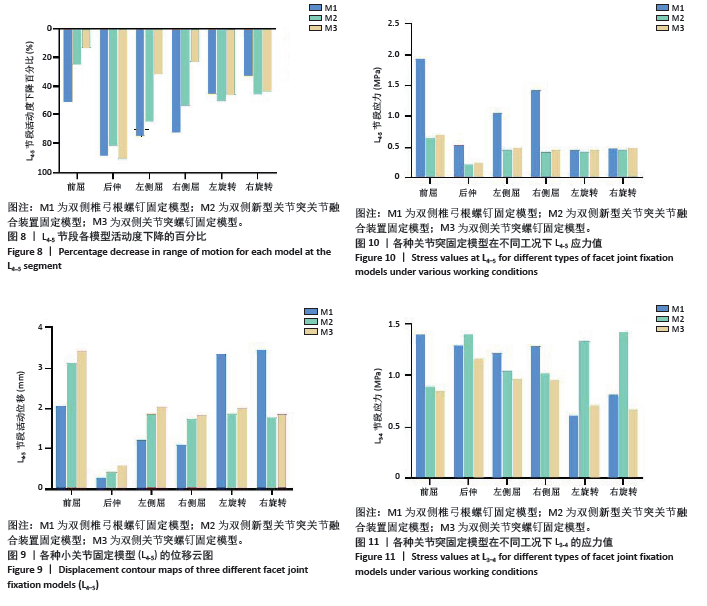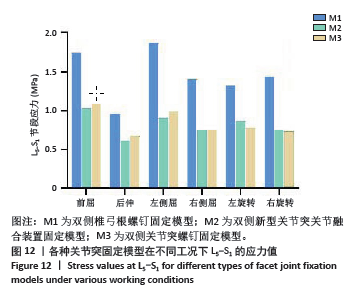[1] SEIDEL MF, NETZER C, CHOBAZ V, et al. Localization of Nerve Growth Factor Expression to Structurally Damaged Cartilaginous Tissues in Human Lumbar Facet Joint Osteoarthritis. Front Immunol. 2022;13: 783076.
[2] TIWARI P, KAUR H, JHA V, et al. Chronology of disc degeneration and facet joint arthritis in lumbar spine is variable - A CT based cross-sectional study. J Orthop Sci. 2022;27(6):1197-1202.
[3] KATZ JN, ZIMMERMAN ZE, MASS H, et al. Diagnosis and Management of Lumbar Spinal Stenosis: A Review. JAMA. 2022;327(17):1688-1699.
[4] GODOLIAS P, FRIELER S, TATARYN ZL, et al. Towards a More Realistic Appraisal of Complications Following Staged Lateral Lumbar Interbody Fusion: A Single Institution Series. Global Spine J. 2024;14(1): 130-137.
[5] TAO X, MATUR AV, KHALID S, et al. TLIF is Associated With Lower Rates of Adjacent Segment Disease and Complications Compared to ALIF: A Matched-Cohort Analysis. Spine. 2023;48(19):1335-1341.
[6] ARAGHI K, FOURMAN MS, MERRILL RK, et al. Postoperative Radiculitis After L5-S1 Anterior Lumbar Interbody Fusion. Spine. 2023;48(18): 1317-1325.
[7] SUN D, LIANG W, HAI Y, et al. OLIF versus ALIF: Which is the better surgical approach for degenerative lumbar disease? A systematic review. Eur Spine J. 2023;32(2):689-699.
[8] EMAMI A, PATEL N, COBAN D, et al. Comparing clinical and radiological outcomes between single-level OLIF and XLIF: A systematic review and meta-analysis. N Am Spine Soc J. 2023;14:100216.
[9] WELCH-PHILLIPS A, GIBBONS D, AHERN DP, et al. What Is Finite Element Analysis? Clin Spine Surg. 2020;33(8):323-324.
[10] SIMON L, MILLOT F, HOARAU X, et al. Comparison of the Biomechanical Effect of the FFX Device Compared With Other Lumbar Fusion Devices: A Finite Element Study. Int J Spine Surg. 2022;16(5):935-943.
[11] CAI XY, SUN MS, HUANG YP, et al. Biomechanical Effect of L4 -L5 Intervertebral Disc Degeneration on the Lower Lumbar Spine: A Finite Element Study. Orthop Surg. 2020;12(3):917-930.
[12] FAN W, GUO LX. Influence of different frequencies of axial cyclic loading on time-domain vibration response of the lumbar spine: A finite element study. Comput Biol Med. 2017:86:75-81.
[13] CHOI HW, KIM YE. Effect of lumbar fasciae on the stability of the lower lumbar spine. Comput Methods Biomech Biomed Engin. 2017; 20(13):1431-1437.
[14] SRINIVAS GR, KUMAR MN, DEB A. Adjacent Disc Stress Following Floating Lumbar Spine Fusion: A Finite Element Study. Asian Spine J. 2017;11(4):538-547.
[15] KALICHMAN L, LI L, KIM DH, et al. Facet Joint Osteoarthritis and Low Back Pain in the Community-Based Population. Spine. 2008;33(23): 2560-2565.
[16] DREISCHARF M, ZANDER T, SHIRAZI-ADL A, et al. Comparison of eight published static finite element models of the intact lumbar spine: Predictive power of models improves when combined together. J Biomech. 2014;47(8):1757-1766.
[17] ROHLMANN A, ZANDER T, RAO M, et al. Realistic loading conditions for upper body bending. J Biomechan. 2009;42(7): 884-890.
[18] VADAPALLI S, SAIRYO K, GOEL VK, et al. Biomechanical rationale for using polyetheretherketone (PEEK) spacers for lumbar interbody fusion-A finite element study. Spine. 2006;31(26):E992-E998.
[19] YANG M, SUN G, GUO S, et al. The Biomechanical Study of Extraforaminal Lumbar Interbody Fusion: A Three-Dimensional Finite-Element Analysis. J Healthc Eng. 2017:2017:9365068.
[20] SONG M, SUN K, LI Z, et al. Stress distribution of different lumbar posterior pedicle screw insertion techniques: a combination study of finite element analysis and biomechanical test. Sci Rep. 2021;11: 12968.
[21] EASTLACK RK, NUNLEY PD, POELSTRA KA, et al. Finite element analysis comparing a PEEK posterior fixation device versus pedicle screws for lumbar fusion. J Orthop Surg Res. 2023;18(1):855.
[22] PAN CC, LEE CH, CHEN KH, et al. Comparative Biomechanical Analysis of Unilateral, Bilateral, and Lateral Pedicle Screw Implantation in Oblique Lumbar Interbody Fusion: A Finite Element Study. Bioengineering (Basel, Switzerland). 2023;10(11):1238.
[23] GOEL A, SHAH A, JADHAV M, et al. Distraction of facets with intraarticular spacers as treatment for lumbar canal stenosis: report on a preliminary experience with 21 cases: Clinical article. J Neurosurg Spine. 2013;19(6):672-677.
[24] GOEL A. Facet distraction spacers for treatment of degenerative disease of the spine: Rationale and an alternative hypothesis of spinal degeneration. J Craniovertebr Junction Spine. 2010;1(2):65-66.
[25] GOEL A, MEHTA P, SATOSKAR S, et al. Quantitative morphometric analysis of the lumbar vertebral facets and evaluation of feasibility of lumbar spinal nerve root and spinal canal decompression using the Goel intraarticular facetal spacer distraction technique: A lumbar/cervical facet comparison. J Craniovertebr Junction Spine. 2014;5(4):157-162.
[26] SROUR R, GDOURA Y, DELAITRE M, et al. Facet Arthrodesis with the FFX Device: One-Year Results from a Prospective Multicenter Study. Int J Spine Surg. 2020;14(6):996-1002.
[27] SROUR R. Comparison of Operative Time and Blood Loss With the FFX® Device Versus Pedicle Screw Fixation During Surgery for Lumbar Spinal Stenosis: A Retrospective Cohort Study. Cureus. 2022;14(3):e22931.
[28] ZHANG X, WANG Y, ZHANG W, et al. Perioperative Clinical Features and Long-term Prognosis After Oblique Lateral Interbody Fusion (OLIF), OLIF With Anterolateral Screw Fixation, or OLIF With Percutaneous Pedicle Fixation: A Comprehensive Treatment Strategy for Patients With Lumbar Degenerative Disease. Neurospine. 2023;20(2):536-549.
[29] HE W, HE D, SUN Y, et al. Standalone oblique lateral interbody fusion vs. combined with percutaneous pedicle screw in spondylolisthesis. BMC Musculoskelet Disord. 2020;21(1):184.
[30] KAPETANAKIS S, GKANTSINIKOUDIS N. Anatomy of lumbar facet joint: a comprehensive review. Folia Morphologica. 2021;80(4):799-805.
[31] YANG KH, KING AI. Mechanism of facet load transmission as a hypothesis for low-back pain. Spine. 1984;9(6):557-565.
[32] ADAMS MA, HUTTON WC. The effect of posture on the role of the apophysial joints in resisting intervertebral compressive forces. J Bone Joint Surg Br. 1980;62(3):358-362.
[33] OLDWEILER AB, MARTIN JT. In vivo relationships between lumbar facet joint and intervertebral disc composition and diurnal deformation. Clin Biomech (Bristol, Avon). 2021:88:105425.
[34] PRADO M, MASCOLI C, GIAMBINI H. Discectomy decreases facet joint distance and increases the instability of the spine: A finite element study. Comput Biol Med. 2022;143:105278.
[35] FINE N, LIVELY S, SÉGUIN CA, et al. Intervertebral disc degeneration and osteoarthritis: a common molecular disease spectrum. Nature Reviews. Rheumatology. 2023;19(3):136-152.
[36] BUTLER D, TRAFIMOW JH, ANDERSSON GB, et al. Discs degenerate before facets. Spine. 1990;15(2):111-113.
[37] XIA XP, CHEN HL, CHENG HB. Prevalence of Adjacent Segment Degeneration After Spine Surgery: A Systematic Review and Meta-analysis. Spine. 2013;38(7):597.
[38] TAKEDA K, OKADA E, SHINOZAKI Y, et al. Risk factors for early-onset radiographical adjacent segment disease in patients with spondylolytic spondylolisthesis after single-level posterior lumbar interbody fusion. Spine J. 2022;22(7):1112-1118.
[39] YUAN C, ZHOU J, WANG L, et al. Adjacent segment disease after minimally invasive transforaminal lumbar interbody fusion for degenerative lumbar diseases: incidence and risk factors. BMC Musculoskelet Disord. 2022;23(1):982.
[40] WEINHOFFER SL, GUYER RD, HERBERT M, et al. Intradiscal pressure measurements above an instrumented fusion. A cadaveric study. Spine. 1995;20(5):526-531.
[41] CUNNINGHAM BW, KOTANI Y, MCNULTY PS, et al. The effect of spinal destabilization and instrumentation on lumbar intradiscal pressure: an in vitro biomechanical analysis. Spine. 1997;22(22):2655-2663.
|



